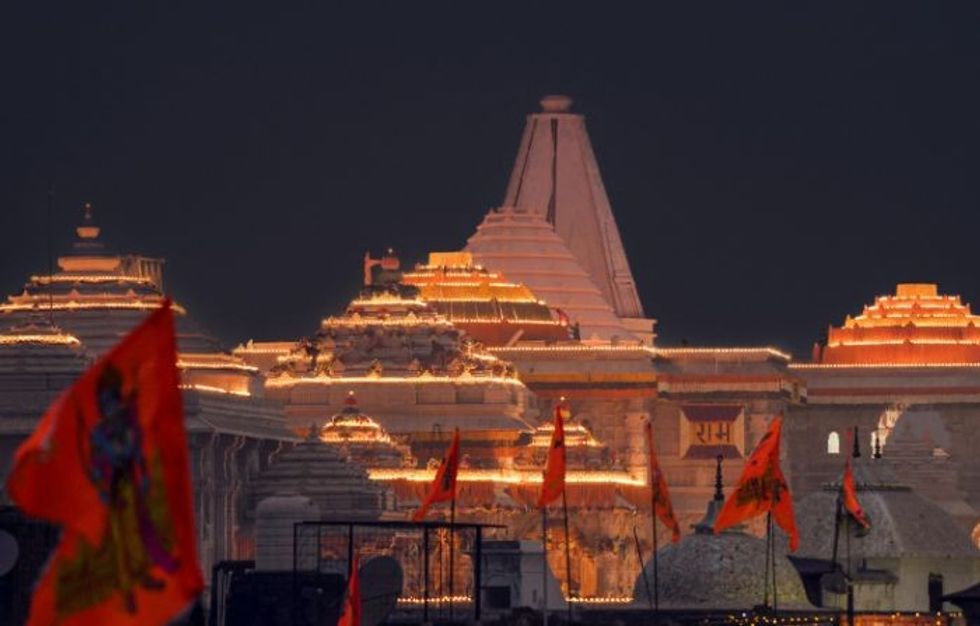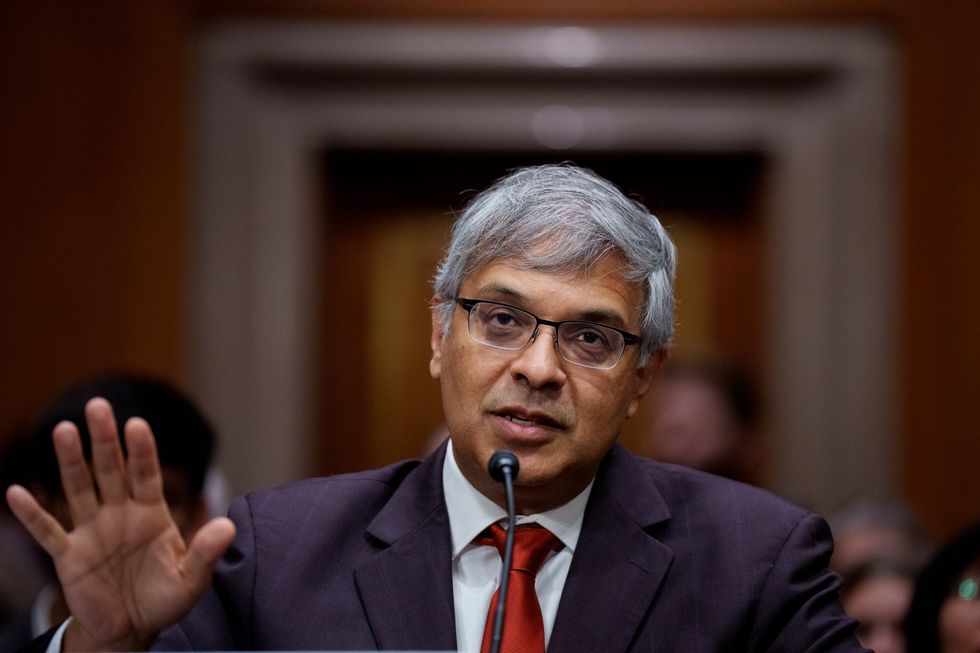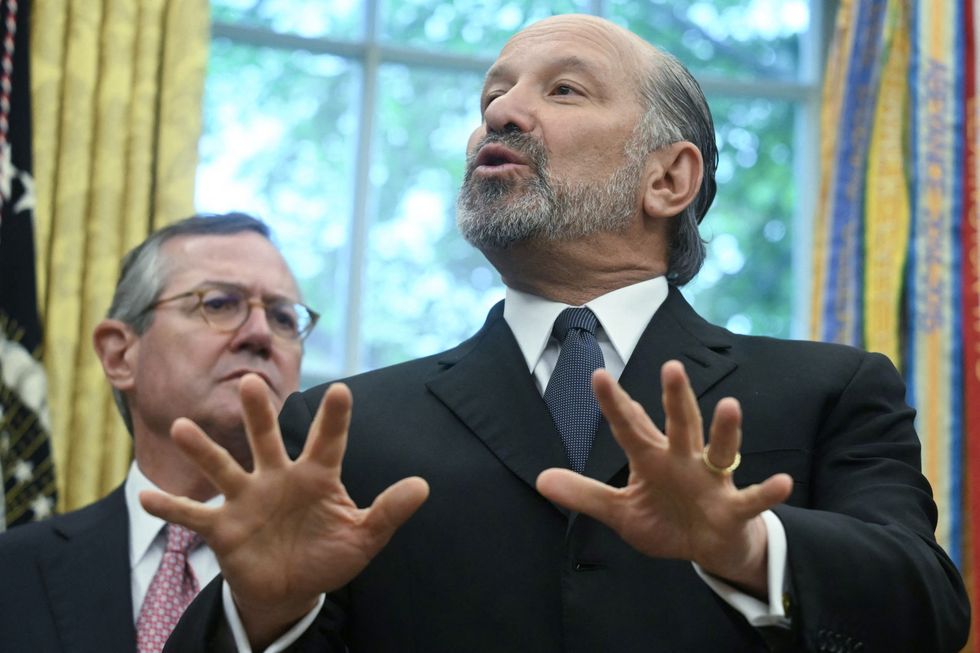ON January 22, 2024, the world will witness the consecration of the Ram Mandir in Ayodhya, a holy town in the northern Indian state of Uttar Pradesh, with an estimated 7,000 attendees. The “pran pratishtha’ (consecration) ceremony will be held on this day and will be presided over by prime minister Narendra Modi.
The Ram temple is set to be one of India's most expensive religious undertakings, costing approximately Rs 1,800 crore (£170.4 million). From February 5, 2020, to March 31, 2023, the Shri Ram Janmabhoomi Teerth Kshetra Trust spent Rs 900 crore (£85.2 million) building the temple.
In the next few years, Ayodhya will be both a spiritual and a tourism magnet for the country. The number of visitors now speaks for itself -- from 325,000 in 2021, to 23.9 million in 2022 to roughly 35 million in 2023 when the temple was yet to be inaugurated. After the consecration, the footfall is expected to be 100,000 per day.
Read: PM Modi takes holy dip in Rameswaram sea ahead of Ram temple consecration

Experts believe that the tourism industry will grow to Rs 50,000 crore (£4.7 billion) within a few years, thanks to the temple, transforming Uttar Pradesh into an economic powerhouse.
Read: India pulls up Amazon for selling sweets as ‘Ram Mandir Ayodhya Prasad’
Due to the predicted extraordinary increase in tourism income for India's most populous state, it will also become No.1 in terms of economic growth and meet the goal of more than $1 trillion (£787 billion) in GDP.
Read: Once a sleepy town, Ayodhya is full of life ahead of Ram temple consecration
Ayodhya is set to become a global tourism hub, while other tourist destinations in the country would become smaller hubs.
More tourism revenue would be transferred to Uttar Pradesh, primarily from other states such as Uttarakhand, Himachal Pradesh, and Goa. Media reports show that Ayodhya has already surpassed Goa, Himachal Pradesh, and Uttarakhand in investments and real-estate queries. Ayodhya's tourism economy is expected to grow 10-fold this year, positioning it as a global spiritual destination comparable to Vatican City and Mecca.
A surge in tourist inflows has already increased demand for accommodation and travel, leading to a significant upswing in Ayodhya's hospitality sector, with a particular focus on the establishment of adequate infrastructure for host travellers.
Recently, the chief minister of Uttar Pradesh, Yogi Adityanath, stated that Ayodhya's growing prominence is not only due to its spiritual and emotional significance but also because it is rising as a significant tourist attraction. The city was recently granted international airport status, allowing for greater worldwide connectivity.
Furthermore, it is projected that the hospitality, travel, and tourism industries will grow significantly, providing up to 25,000 new jobs alone to accommodate the expected rush of millions of tourists to Ayodhya following the Ram Mandir's opening on January 22.
Hotel and restaurant owners in Ayodhya and other cities of Uttar Pradesh, including Lucknow, Kanpur, and Gorakhpur, are closely monitoring demand-supply dynamics. Ayodhya currently has only two large branded hotels: Park Inn by Radisson and Cygnet, although more are expected to open in the near future.
The opening of the Ram Temple in Ayodhya is expected to spark a tourism boom, creating lucrative economic opportunities and job growth. More importantly, the completion of this one-of-a-kind temple will fulfill more than 500 years' worth of hopes and aspirations for billions of Hindus because Ram is their "astha" (faith), “Maryada Purshottam” (most dignified man) and a supreme power.













 NASA’s Astronaut Class 23 with Anil Menon shows patch features a fly-shaped design symbolizing the class nickname, “The Flies,” with twelve stars for each candidate. The UAE and US flags highlight international collaboration, while the astronaut figure reflects their commitment to NASA’s return to the Moon and future Mars missions. (Photo credit: @astro_anil)
NASA’s Astronaut Class 23 with Anil Menon shows patch features a fly-shaped design symbolizing the class nickname, “The Flies,” with twelve stars for each candidate. The UAE and US flags highlight international collaboration, while the astronaut figure reflects their commitment to NASA’s return to the Moon and future Mars missions. (Photo credit: @astro_anil)
